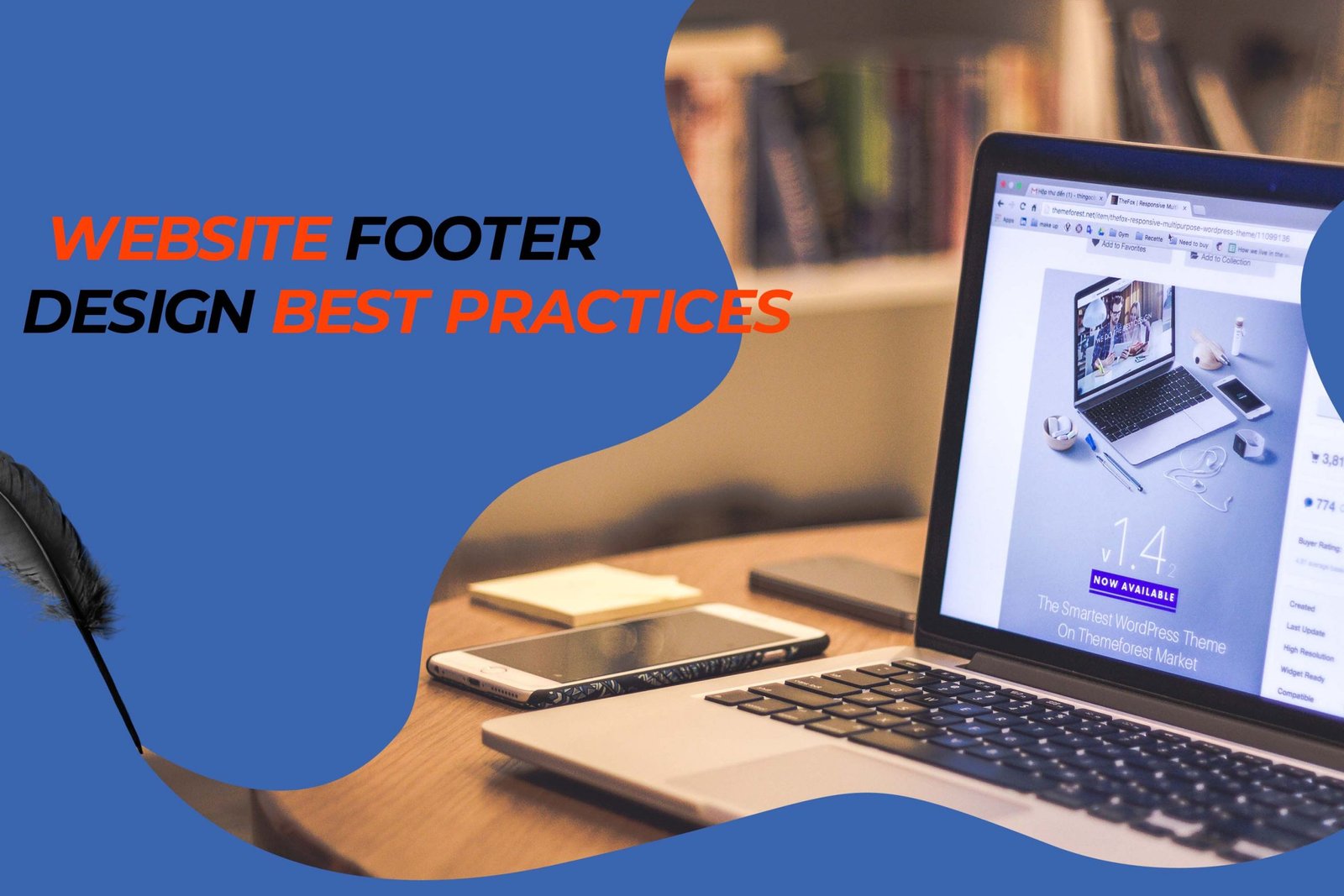A website footer is an often overlooked yet essential part of any website design. It serves as the final touch on a website and can greatly impact the overall user experience. A well-designed footer can provide valuable information and navigation options to users while also adding visual interest to the page. On the other hand, a poorly designed footer can detract from the overall user experience and even drive users away from the site. In this blog, we’ll discuss best practices for designing an effective website footer.
01. Keep it Simple
The footer should be simple and clean, with a clear layout and hierarchy of information. The use of too many elements or excessive clutter can make the footer overwhelming and confusing for users. Instead, choose a limited color palette and font style, and stick to a grid-based layout to ensure that all elements are aligned and easy to read.
02. Provide Useful Information
The footer is an excellent opportunity to provide users with important information about the website and its services. Common elements in a footer include contact information, links to legal information such as privacy policies and terms of use, and links to social media pages. It’s also a good idea to include links to key pages within the website, such as the homepage, about page, and product or service pages.

03. Make it Mobile-Friendly
With the increasing number of users accessing websites on mobile devices, it’s essential to ensure that your footer is optimized for mobile viewing. A mobile-friendly footer should be easy to navigate, with elements that are large enough to be tapped accurately with a finger. It’s also a good idea to consider the order in which elements are displayed on a mobile device, as this can impact the user experience.
04. Use Consistent Design Elements
The footer should match the overall design style of the website, using the same color palette, typography, and other design elements. This helps to create a cohesive look and feel throughout the site and makes it easier for users to navigate and understand.
05. Keep the Footer Visually Appealing
The footer is the final visual element that users will see on a website, so it’s important to keep it visually appealing. Adding graphics, such as icons or images, can help to break up the text and make the footer more interesting. It’s also a good idea to consider the use of subtle animations, such as hover effects, to add some interactivity to the footer.
06. Provide Social Media Links
Including links to social media profiles in the footer can help to increase the visibility of the website and promote engagement with users. This is especially important for businesses, as social media can be a powerful tool for reaching new customers and building brand awareness.

07. Make the Footer Navigation User-Friendly
The footer should be easy to navigate, with clear links that are easy to understand. Avoid using technical jargon or abbreviations, and instead opt for clear, concise language that users will understand. It’s also a good idea to consider the placement of links within the footer, as this can impact the user experience.
08. Keep the Footer Up-to-Date
The footer should be regularly updated to ensure that all information is accurate and relevant. This includes updating contact information, links to social media profiles, and any legal information such as privacy policies. Regular updates will help to ensure that the footer remains an accurate and valuable resource for users.
![]()
09. Test the Footer on Different Devices and Screen Sizes
It’s essential to test the footer on different devices and screen sizes to ensure that it is optimized for all users. This includes checking for any design or layout issues on desktop, tablet, and mobile devices. The footer should be able to adjust to different screen sizes without losing any important information or functionality. In addition, testing the footer on different devices can help to identify any accessibility issues that may need to be addressed.
10. Include a Call-to-Action (CTA)
The footer is a great place to include a call-to-action (CTA) that encourages users to take a specific action, such as subscribing to a newsletter or following the company on social media. The CTA should be clear and concise, and should stand out visually from the other elements in the footer. This can help to drive engagement and increase conversions for the website.

11. Make the Footer Accessible
It’s important to ensure that the footer is accessible to all users, including those with disabilities. This includes using clear, concise language and providing alternative text for images and graphics. The use of colors and contrast should also be considered to ensure that the footer is easy to read for users with visual impairments.
12. Consider the User Experience
When designing a website footer, it’s important to consider the user experience. The footer should be easy to navigate, with clear links and a clean layout. It should also provide valuable information to users, without overwhelming them with too much content. The use of clear and concise language, and a visually appealing design, can greatly impact the user experience and help to drive engagement with the website.
In conclusion, the design of a website footer is an important aspect of any website design. A well-designed footer can provide valuable information and navigation options, while also adding visual interest to the page. By following best practices such as keeping it simple, providing useful information, making it mobile-friendly, and keeping the footer visually appealing, you can create a footer that enhances the user experience and drives engagement with your website.
Contact Tectera for web design in Sri Lanka.





